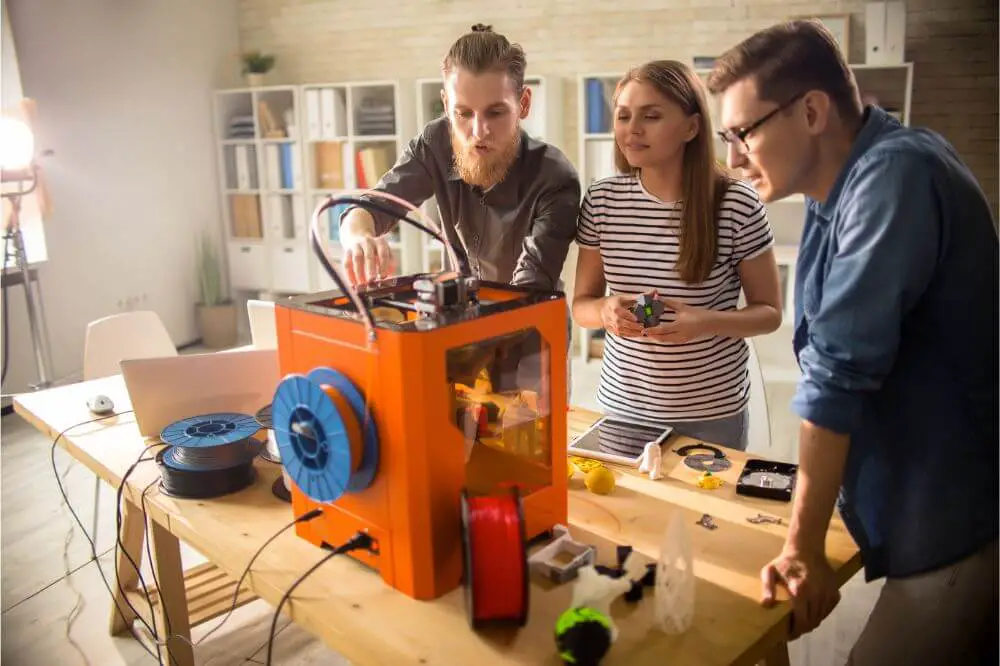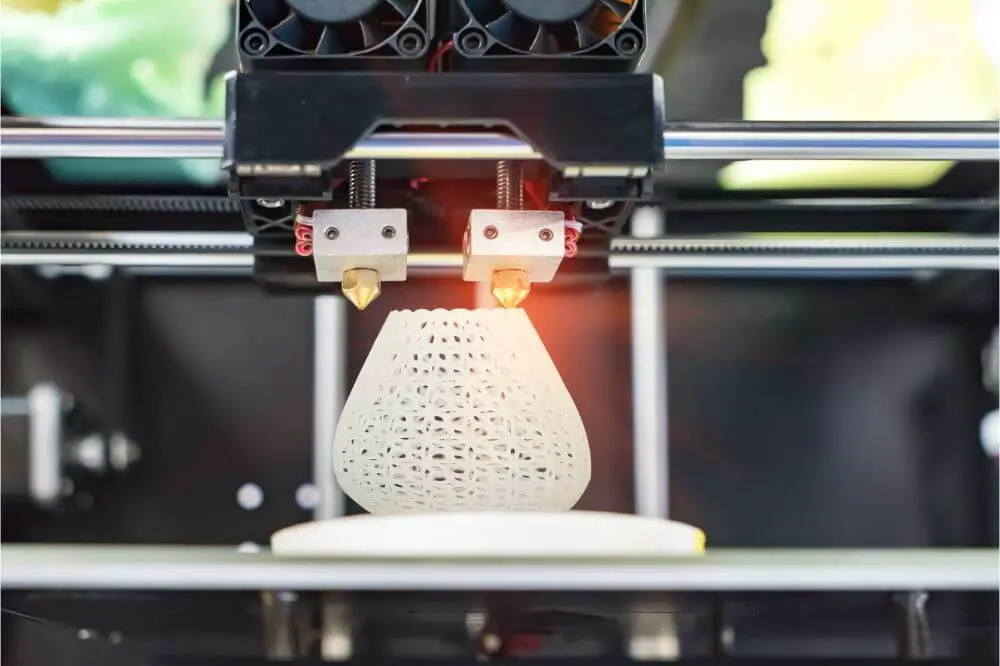The last few years have seen a heightened fascination with 3D printing technology, which has taken the commercial, industrial and consumer imagination by storm.
Due to these recent developments, speculations have started arising that this technology will replace traditional manufacturing. But is this possible? Well, if you’re looking for the answer to this, don’t move a muscle, as this article clearly explains all that you need to know.
Can 3D Printing At The Moment Replace Traditional Manufacturing?
Whereas it’s no doubt that 3D printing technology has a lot of merits, the thought of it replacing traditional manufacturing is a far-fetched idea. This is despite this technology improving commercial and industrial prototyping, thereby increasing demand within the consumer space.
3D printing can’t fully replace traditional manufacturing at the moment. This is because this technology won’t be able to produce high-quality products dependably and quickly. Furthermore, you can’t use a broad range of materials when printing with 3D printers.
All these shortcomings of 3D printing can be completed with traditional manufacturing and on a large scale.
If you still believe 3D printing is the way to go, here’s a detailed guide on the reasons why it’s still a long way from replacing manufacturing.
Quantity of Production
When making an item using a 3D printer, you need to set aside three to 30 hours. This duration might even be longer when producing complicated items that require at least several days, while flat items are produced within an hour.
If you want to make ten items that need three days to make, you’ll need at least 30 days for all of them to be produced. The printing speed can’t be increased even after amassing more experience.
This differs from traditional manufacturing, whereby you can increase the volume of production after getting more experience. For example, you need less than three minutes to prepare an injection casting machine and make ten model tanks using a plastic model manufacturer.
In contrast, you’d need at least 10 hours when printing the tank using an AnyCubic Photon DLP resin 3D printer. Using the 3D printer consequently takes you 100 hours to print ten tanks.
Therefore, despite manufacturing requiring lots of money and equipment in preparation for production, it takes a much shorter period once you start the process.

Accuracy
It’s no doubt that 3D printing guarantees printing that’s of exceptional quality. With that said, it still lags behind manufacturing since they occasionally underperform. This happens due to internal stress and the technical process involved in 3D printing during object solidification and might lead to deformation.
Achieving excellent precision when using 3D printers is also not possible for mission-critical cases. This is something that even the accuracy of Selective Laser Melting (SLM) technology can’t compare to CNC machining.
Speed
Using 3D printers to make an item is a low process as it entails heating the material into liquid and then creating layers of materials. This is the process that making any item involves, and even at the greatest speeds, 3D printers can’t match the speed of a CNC machine.
Using a CNC machine, you can quickly complete the task being undertaken, but with 3D printers, you need to follow separate steps. As a result, this renders 3D printing less efficient when compared to CNC machining. Thus, it’s no surprise that a project that doesn’t surpass one hour in a CNC process uses up more time if you instead opt for a 3D printer.
Quality of Production
It’s well known that 3D printers can produce excellent quality products. For example, the 3D DLP resin printer can make items that have a z-axis height of 0.025mm. If you’re a hobbyist, this is good enough since you’ll only need to produce about five items. In such instances, the use of a 3D printer is a good idea. Some of the objects you can make include buttons, phone cases, mechanical items, game pieces, toys, and handles for your kitchen drawers.
Nonetheless, if your goal is to ensure the large-scale production of high-quality objects, then manufacturing undoubtedly has a slight edge over 3D printing. You also aren’t limited to the number of uses, unlike with 3D printers. Therefore, you can decide to engage in milling, welding, metal casting, injection plastics, automated assembly, lathing, and a lot more.
Material
Another aspect that traditional manufacturing has a slight edge over 3D printing is that you can use a broad range of materials from metals and plastics. In contrast, you can only use thermoplastics such as resins, ABS, or PLA when using a 3D printer. This is a major downside of 3D printers, making it replacing manufacturing a lot harder in the near future.
Strength
The strength of items created using a 3D printer is also another factor that makes this technology far from replacing manufacturing just yet. This is because 3D printing involves building materials in layers, thereby leading to laminate flaws since these layers don’t attach well while in the Z-axis than in the X and Y plane. However, manufacturing processes such as injection molding creates an object that’s very strong across all parts since the material’s structure is fairly consistent.
The items made using 3D printers are also not as strong because only a handful of plastics are considered a suitable option. This is further hampered by the difficulty in finding a full range of high-performance plastics.
Aesthetics
Do you want an item that has a perfect and smooth finish? If so, then using a 3D printer isn’t the best way to go since the object is produced through a series of successive addition of layers until you’re done making the item. The subsequent finished product looks thinly sliced with horizontal cross-section.
This shouldn’t be an issue with manufacturing processes such as CNC machining, stamping, and injection molding. Therefore, 3D printers still have a long way to go before making an item that looks more appealing and has a smoother finish.
Conclusion
It’s no doubt 3D printers are a revolutionary innovation that will revolutionize the production of items. However, this technology is still a long way to achieve the desired outcome when it comes to making products of exceptional quality. If you thought 3D printers were ready to take over the production of items, reading through this in-depth article has helped correct that notion.

